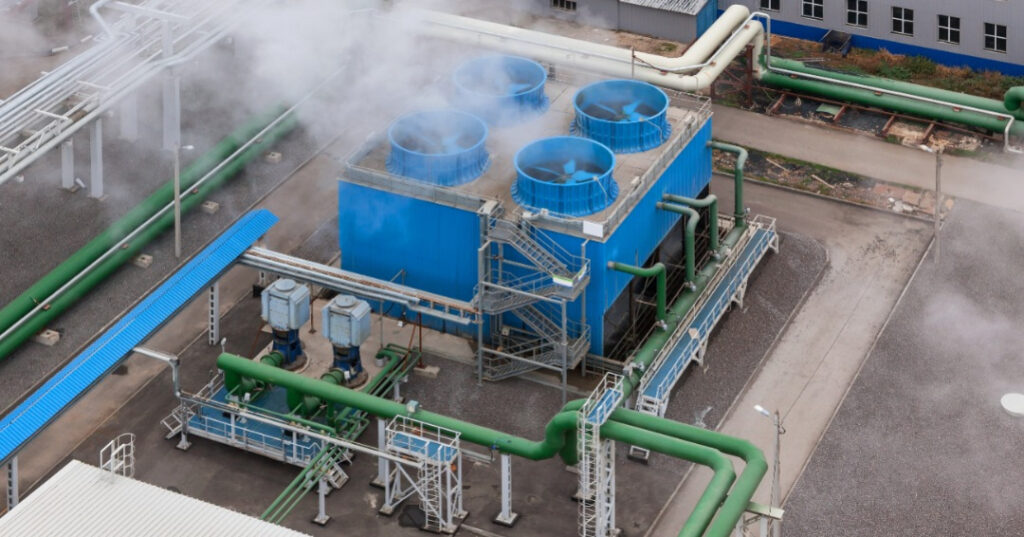Legionella bacteria can pose a risk of growing in Cooling Towers under certain conditions. Cooling Towers are part of the heating, ventilation, and air conditioning (HVAC) systems used in many buildings, industrial facilities, and power plants. They are responsible for removing excess heat from the system by evaporating water.
There are several reasons why the risk of Legionella developing in cooling towers tends to increase during warmer months:
1) Temperature: Legionella bacteria thrive in warm water temperatures between 20°C and 50°C (68°F to 122°F). During the warmer months, ambient temperatures are generally higher, which can result in the water inside Cooling Towers reaching or exceeding the optimal temperature range for bacterial growth. The warmer water provides an ideal environment for Legionella to multiply rapidly.
2) Algae and Biofilm Growth: Warmer temperatures promote the growth of algae and biofilms in cooling towers. Algae and biofilms serve as a nutrient source for Legionella bacteria, providing them with organic matter to feed on and promoting their proliferation. These growths can accumulate more rapidly in warmer weather, increasing the potential for Legionella colonization.
3) Water Stagnation: In some cases, Cooling Towers may experience reduced usage or even periods of shutdown during the cooler months when cooling demands are lower. This can lead to water stagnation within the system. Stagnant water provides an opportunity for Legionella to multiply, as there is no flow or circulation to disrupt their growth. When the system becomes operational again during the warmer months, the accumulated bacteria can be released into the air as aerosols.
4) Increased Cooling Tower Usage: Cooling Towers are typically used more frequently during warmer months due to increased cooling demands from air conditioning systems. Higher usage means that more water is circulated through the system, increasing the potential for Legionella bacteria to be present and released into the environment.
5) Aerosol Dispersion: Cooling Towers function by evaporating a small portion of the water to remove heat from the system. This evaporation process creates aerosols, tiny water droplets that are released into the air. If these aerosols contain Legionella bacteria, they can be inhaled by individuals in the vicinity of the Cooling Tower. Warmer weather often leads to more outdoor activities and increased outdoor air circulation, potentially exposing a larger number of people to the aerosolized Legionella bacteria.
It’s important to note that while the risk of Legionella development in Cooling Towers may be higher during warmer months, proper maintenance, regular cleaning, disinfection, and water treatment are essential throughout the year to mitigate the risk and ensure the safety of the Cooling Tower system.



